IJCRR - 4(2), January, 2012
Pages: 43-53
Print Article
Download XML Download PDF
EFFECT OF PUSHUP TRAINING ON UPPER BODY STRENGTH AND POWER IN YOUNG
ADULTS
Author: Salvi Shah
Category: Healthcare
Abstract:Introduction: Strength and Endurance in the muscles of upper body, specifically the chest, shoulder triceps and core is a good indication of overall fitness. Proper pushups are one of the best exercises for developing pushing strength and power for upper body. Aim of Study: To study effectiveness of dynamic/plyometric pushup training on upper body
strength and power and to study the comparative effectiveness of dynamic/plyometric pushup training Methodology: Study design: An experimental comparative study Sample selection: A random sample of 30 students were taken from government Physiotherapy college, civil hospital, Ahmedabad after giving due consideration to inclusion and exclusion criteria. All of them took part in study on a voluntary basis after signing consent. Sample size: Total 30 Group A: Dynamic pushup training-15, Group B:Plyometric push up training-15 Inclusion criteria Age-18-24 years, Male students, Students who have experience in recreational over head sports Exclusion criteria Any major upper extremity/back injury within last one year, An active participation in an intercollegiate athletics or bodybuilding during study, Those who reported performance enhancing drugs, Any medical illness Outcome measures 1 RM bench press for measuring strength, Medicine ball put test for measuring power. Results: In Group A and Group B results showed highly significant mprovement in 1 RM and medicine ball putdistance after 6 weeks of exercise at 5% level of significance. On comparing Group A and Group B the results showed no significant difference in improvements in 1RM but showed significant difference in improvement in medicine ball put distance between both groups at 5% level of significance. Conclusion: From the present study it can be concluded that plyometric pushup exercises are superior to dynamic pushup exercises in terms of strength and power.
Keywords: Pushup, Upper body Strength and Power
Full Text:
INTRODUCTION
Today‘s sports and recreation activities have become more and more competitive, with this increased competitive nature comes an increase in the desire to improve performance. Many techniques have been used over the years in an attempt to enhance performance and thus improve success. One of the most important aspects of performance enhancement, other than the skill is the ability to produce power1 . Success in many sports depends heavily upon the athlete‘s explosive leg power and muscular strength2 . Three elements of muscle performance strength, power and endurance can be enhanced by some form of resistance exercise3 . Strength and endurance in the muscles of upper body, specifically the chest, shoulder triceps and core is a good indication of overall fitness. Upper body strength and endurance is essential for athletes such as swimmers, tennis players, climbers or golfers who demand strength and power from their arms and shoulder to perform well and avoid injury4, 5. So, developing upper body strength and power should be integrated part of a complete training programme6 . Proper pushups are best exercises for developing strength and power for upper body. It is an effective upper body exercise that uses the body‘s own weight to build fitness foundation. They promote strength, balance and stability by developing several key muscles, including pectoralis major in chest, deltoid or shoulder muscles, scapular and rotator cuff, triceps located on the back of the upper arm and upper back muscles 7 . Upper body power is obviously valuable for athletes who participate in tennis, javelin throw, shot-put, discus throw, base ball, foot ball and variety of sports. Power is the most desired physical quality for a number of sports because it entails both force and velocity aspects. Because both strength and power can be improved by many different training variables, training to improve power output has been described as requiring a multifaceted approach8 . There are many different types of pushups. They are named as below. Planche pushups, Boxer's pushups, Maltese pushups, Hindu pushups, Guillotine pushups, less difficult versions: Wall pushups/Modified (Dynamic) pushups, plyometric pushups9 . Cogley et al reviewed the benefits of a narrow-base hand position over the triceps brachii and the benefits of a wide base hand position over the pectoralis major10. Freeman et al reported the benefit of more shoulder muscle activation with the dynamic push-up (push-up with the hands on a wobbly surface) 11 . As such there is controversy and lack of research regarding which pushups are better for improving upper body strength/power and Very few researches have attempted to document the effectiveness of plyometric training on upper extremities12. So purpose of this study is to see the individual effects of plyometric push up training and dynamic push up training on upper body strength and power and also to compare the effect of dynamic push up training and plyometric push up training on power and strength of upper body.
MATERIALS AND METHODOLOGY
Study design
An experimental comparative study
Study setting Fitness centre of Government Physiotherapy College, Government Spine Institute, Civil hospital, Ahmedabad
Sample selection A random sample of 30 students were taken from government Physiotherapy college, Civil hospital, Ahmedabad after giving due consideration to inclusion /exclusion criteria. All of them took part in study on voluntary basis after signing consent.
Sample size 30 Group A -15 (Dynamic pushup training) Group B -15 (Plyometric pushup training)
Selection criteria: Inclusion criteria: Age: 18 -24 years Sex: Male students Students who have experience in recreational over head sports Exclusion criteria: Any upper extremity or back injury within last one year An active participation in an intercollegiate athletics/bodybuilding during the course of study Those who reported performance enhancing drugs Any medical illness.
Outcome measures
1 RM bench press for measuring strength4, 13 Medicine ball put test for measuring power 13, 14, 15
1 RM bench press test has been used extensively as an outcome measure13 and has good reliability and validity16 . (Photograph 1) Medicine ball put has been used extensively as an outcome measure13, 14, 15 and has good reliability and validity14, 17 . (Photograph 2)
Procedure
Subjects who fulfilled all inclusion criteria were taken up for study. The procedure was explained to all subjects. All subjects signed consent and were allocated randomly to either dynamic push up group or plyometric push up group. The intervention covered 18 training sessions, at a frequency of 3 sessions per week and with at least 48 hours between sessions14.The bench press and medicine ball put distance were used as criterion measurements. Before the start of study and again after 6 weeks of training, 2 tests (i.e. 1 RM bench press and medicine ball put) were used to measure the strength and power of chest and shoulder girdle musculature. Tests were preceded by general warm up that included 5 minutes of stationary cycling followed by flexibility exercises for chest and shoulder girdle musculature. The 2 tests were completed on one occasion with about 5 minutes rest between each test14 . Subjects were divided into 2 groups. Group A (n=15) trained with dynamic pushups and Group B (n=15) trained with plyometric pushups. The dynamic push up training and plyometric push up training programs were matched for repetitions, sets, progression and rest intervals between sets. Subjects in both groups were completed pushups exercises from kneeling positions. In dynamic push up group, subjects were instructed to follow a cadence of 2 seconds down and 2 seconds up with relatively constant velocity of movements. In plyometric push up group, each plyometric push up was repeated every 4 seconds until the assigned repetitions were completed.
Dynamic push up14
Dynamic push-ups were completed from the knees, with the body remaining straight from the head to the knees, and the knees and toes remaining in contact with the floor throughout the exercise. Subjects started in the up or inclined position with their hands placed just beyond shoulder width apart on the floor, and their fingers pointing forward. When viewed from the side, their hands fall directly below their shoulders. From this position, the subject was instructed to lower his body until his chest almost touched the floor. Without pausing, the subject changed direction and straightened his arms, pushing the trunk up to the starting position. (Photograph 3) .
Plyometric Push-Up14
Plyometric push-ups were completed from the kneeling position, with the knees and feets remaining in contact with the floor. Subjects started with their trunk vertical and their arms relaxed and hanging at their sides. From this position they were allowed themselves to fall forward, extending their arms forward with slight elbow flexion, in preparation for contact. At contact, the subject gradually absorbed the force of the fall by further flexing the elbows and gradually stopped the movement with the chest nearly touching the floor. Immediately after stopping the downward motion, the subject had reversed the action by rapidly extending his arms and propelling his trunk back to the starting position. If the subject was unable to return to the starting position during the ascent phase, then he was allowed to break form at the highest return point and helped himself back to the starting position by flexing at the hips and going into a quadruped position. In this case, the subject was instructed to perform the plyometric pushup with the goal of achieving maximal height and developing the ability to return to the starting position as soon as possible. Subjects were instructed that the ascent phase be similar to a clap push-up (without the hand clap) with the hands leaving the ground, and that they had to perform each repetition with maximum effort, emphasizing a fast switch from trunk descent to trunk ascent.(Photograph 4)
Treatment protocol14 (Table 1)
2 to 3 minutes of rest was given between sets3 . Prior to actual exercises session, general warm up exercises for 5-10 minutes were given. In warm up exercises stationary cycling was followed by flexibility exercises for chest and shoulder girdle musculature. After the completion of training session, cool down exercises were given which includes stationary cycling and gentle stretching exercises for about 5 minutes3 . Subjects were not allowed to be involved in any formal athletic competition or formal weight training for the duration of study. The subjects were observed for any change or any symptoms and asked to report if there is any discomfort during the training session. All the subjects completed the whole treatment program of 6 weeks without any discomfort.
RESULTS
Total 30 subjects were randomly divided into 2 groups: Group A and Group B.15 subjects were taken in each group. All the statistical analysis was done with the help of Graph Pad Demo version. Graph 1, 2, 3 displays the group statistics of age, weight and height distribution among the 30 subjects respectively. No significant difference was seen across the two groups in age, Student‘s t-test (paired t-test) was applied for within group comparison of Group A and Group B. In the Group A and Group B results showed highly significant improvement in 1 RM and medicine ball put distance after 6 weeks of exercise with dynamic push up at 5% level of Student‘s t test (unpaired t test) was applied between group comparison for Group A and Group B. On comparing group A and group B the results showed no significant difference in improvements in 1RM between both groups at 5% level of significance but showed highly significant difference in improvements in medicine ball put distance between both groups at 5%
DISCUSSION
Results of the present study showed that there was a significant improvement in outcome measures of strength and power in both groups (p<0.0001).When comparing two groups, there was more improvement in strength in plyometric push up training group but was not statistically significant(p=0.22); the plyometric push up training group showed highly statistically significant increase in power as compared to dynamic push up training group (p<0.0001).Overall, the plyometric push up group demonstrated greater improvements in strength and power. These findings are in agreement with observations by Crowder et al. 1993, who studied plyometric and isotonic push-ups, added to a weight training program. They used the medicine ball put as their test, and found that the plyometric group demonstrated superior gains19 .
Jeffery F.Vossen et al 2000 Compared plyometric push up training and dynamic push up training on upper body strength and power. They used medicine ball put test and 1RM chest press to measure power and strength respectively. They concluded that there was a significant improvement in outcome measures of strength and power in both groups. When comparing two groups, there was more improvement in strength in plyometric push up training group but was not statistically significant; the plyometric push up training group showed highly statistically significant increase in power as compared to dynamic push up training group14. In accordance with this study, same results have been found in present study. A study was done by Rahman rahimi and Naser Behpur 2005 on ?The Effects of Plyometric, Weigh and Plyometric, Weight Training on Anaerobic Power and Muscular Strength? and they concluded that all training treatments elicited significant improvement in Anaerobic Power and Muscular Strength but combination training group showed significant improvement than the improvement in other two groups2 . In accordance with this study, in present study there was also an improvement in strength and power. The probable mechanism for results in present study was that during plyometric movement, the muscles undergo a very rapid switch from the eccentric phase to concentric phase. This stretch-shortening cycles decreases the time of amortization phase that in turn allows for greater than normal power production(holcomba,1996; Potteiger et al,1999)2 . As the muscle is rapidly stretched and then undergoes a powerful concentric action, additional force is derived from the storage of elastic energy and facilitation of muscle contraction due to stretch reflex. As such, improvement of force output and rate of force development have been shown to result in improved power output and velocity of movement19 . .In the present study, the 2 tests emphasized different aspects of conditioning. In the ball put, the weight of the ball remained constant and improvement was considered to be largely attributable to greater ball velocity, whereas for the bench press, velocity of movement remained constant and gains were considered to be attributable to increased force (lifting more weight). The finding of superior improvement in the plyometric group may be attributable to a greater workload required in the plyometric push up program. This greater workload is attributable to the momentum of the falling trunk, which contributes to the resistance provided by the individual‘s body weight and must be overcome by the upper extremities during the plyometric push-up. Because the kinetic energy the subject must overcome is a function of mass and velocity, the greater velocity of the falling trunk results in greater work to decelerate and then accelerate the body during the plyometric push-up (work = kinetic energy = ½mv2 ) 14 . The 1RM bench press and medicine ball put test are commonly used as outcome measures for measuring strength and power in upper body respectively which indicate that these outcomes are able to detect the changes produced by training12, 16, 2s0 . The major limiting factor in present study was smaller sample size. So future study can be done by taking a larger sample. In present study more improvement was seen in strength and power of upper body in plyometric training group in males, so future study can be done on female population to see the improvement.
CONCLUSION
It can be concluded from the present study that after 6 weeks of training, dynamic push up group and plyometric push up group showed highly statistically significant increase in strength based upon their 1RM bench press and power based upon medicine ball put distance; When comparing two groups, there was more improvement in strength in plyometric push up training group but was not statistically significant ; the plyometric push up training group showed highly statistically significant increase in power as compared to dynamic push up training group. From the present study it can be concluded that plyometric push up exercises are superior to dynamic push up exercises in terms of strength and power. Upper body strength and power is obviously valuable for athletes who participate in base ball, tennis, javelin throw, shot-put and discus throw and variety of sports. Therefore those involved in strength and power conditioning profession can include plyometric push up exercises as an adjunct to their normal training protocols rather than using dynamic push up exercises.
ACKNOWLEDGEMENT
I would like to thank my guide teacher Mrs. Manmit Gill and all the staff members of Government Physiotherapy College, Ahmedabad for their expert guidance and continuous encouragement with their keen interest in my work .I would like to thank Dr. Rajashree and Dr. Atul Trivedi, Lecturer, Department of P.S.M., B.J. Medical College, Ahmedabad for helping me in statistical analysis of the results. I can‘t forget my colleagues and friends who helped me throughout my study. A special thanks to my husband who helped me a lot in carrying out my research work. Author acknowledges the immense help received from the scholars whose articles are cited and included in references of this manuscript. The author is also grateful to authors / editors / publishers of all those articles, journals and books from where the literature for this article has been reviewed and discussed.
References:
1. Wilk K.E., Arrigo., ?Current concepts in the Rehabilitation of the athletic shoulders.? J. orthop Sports Phys. Vol 18 (4): 365-378, 1993.
2. Rahman Rahini, Naser Behpur., ?The effects of plyometric, weight and plyometric weight tranning on an anaerobic power and muscular strength.? J. phy edu and sports. Vol 3 (1): 81 -91, 2005.
3. Carolyn Kisner, Lynn allen., ?Therapeutic Exercises? JAYPEE: 5th edition.
4. Mc Ardle W.D., Katch F.I., Katch V., ?Essentials of Exercise Physiology.? Lippincott Williams and Wilkins: 3rd edition, Philadephlia 2000.
5. Elizabrth Quinn, ?Push up fitness test for upper body strength and Endurance?. December 05, 2008.
6. Thomas W. Kernozek, ?Upper body strength training for basketball training and conditioning?. May/june 2001.
7. By Koolazzice., ?How to do master pushups?. April 2006
8. Danial BAKER., ?Combining Scienfic Research In To Practicle Methods To Increase Effectiveness of Maximal Power Training?. [PhD thesis]. Australian strength and conditioning association, School of biomedical and sport science, edith cowan university, Australia.
9. http://en.wikipedia.org/wiki/Press_up
10. Cogley RM, Archambault TA, Fibeger JF, et al., ?Comparison of muscle activation using various hand positions during the push-up exercise.? J Strength Cond Res; 19:628-633, 2005.
11. Freeman S, Karpowicz A, Gray J, McGill S., ?Quantifying muscle patterns and spine load during various forms of the push-up.? Med Sci Sports Exerc, 38:570-7, 2006. 12. Heiderscheit B.C., K.P. Mclean, G.J. Davies., ?The effects of isokinetic vs. plyometric training on the shoulder internal rotators.? J. Orthop. Sports Phys. Ther. Vol 23: 125–133. 1996. 13. Adams Kent J., Swank, Annm , barnard, Kerry, Berning, Joe M., Sevene Adams, Patricia G., ?Safety of Maximal Power, Strength, and Endurance Testing in Older African American Women?. J Strength and conditioning. Vol 14(3), 254-260, 2000
14. Jeffery F. Vossen, John F. Kramer, Darren G. Burke and Deborah P. Vossen., ?Comparison of Dynamic Push-Up Training and Plyometric Push-Up Training on Upper-Body Power and Strength?. J Strength and Conditioning Research, 14(3): 248– 253, 2000.
15 Avery D. Faigenbaum, James E. McFarland, Fred B. Keiper, William Tevlin, Nicholas A. Ratamess, Jie Kang and Jay R. Hoffman., ?Effects of a short-term plyometric and resistance training program on fitness performance in boys age 12 to 15 years.? J Sports Science and Medicine: Vol 16, 519-525, 2007.
16 Levinger I, Goodman C, Hare D. L., Jerums G., Toia D., Selig S., ?The reliability of the 1RM strength test for untrained middle-aged individuals.? J Sci Med Sport. Vol 12(2):310-6, 2009.
17 Stockbrugger BA, Haennel RG., ?Validity and reliability of a medicine ball explosive power test.? J Strength Cond Res. Nov; 15(4):431-8, 2001
18 Crowder V.R., S.W. Jolly, B. Collins, J. Johnson., ?The effect of plyometric push-ups on upper body power.? Track Field Q. Rev. 93:58–59, 1993.
19 Robert u. Newton, Kerry P. McEvoy., ?Baseball throwing velocity: A comparison of medicine ball training and weight training.? J Strength and Conditioning Research, Vol 8:198-203, 1994.
20 Kathleen A. Swanik, Scott M. Lephart, Buz Swanik, Susan P. Lephart., ?The effects of shoulder plyometric training on proprioception and selected muscle performance characteristics.? Philadelphia and Pittsburgh, Pa.J shoulder elbow surg. Vol 11(6): 579- 586, 2002.

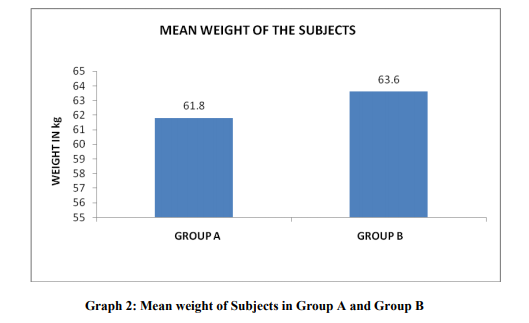
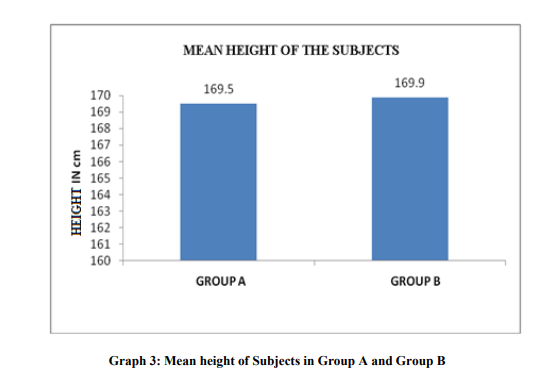

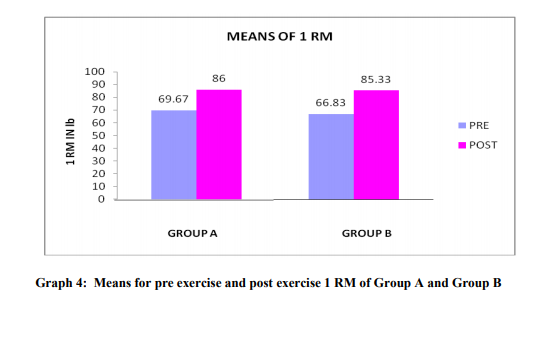
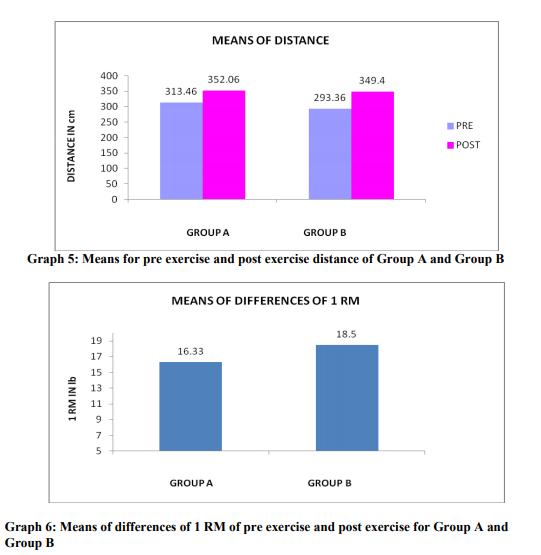
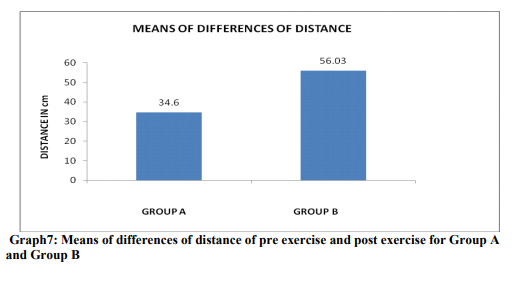
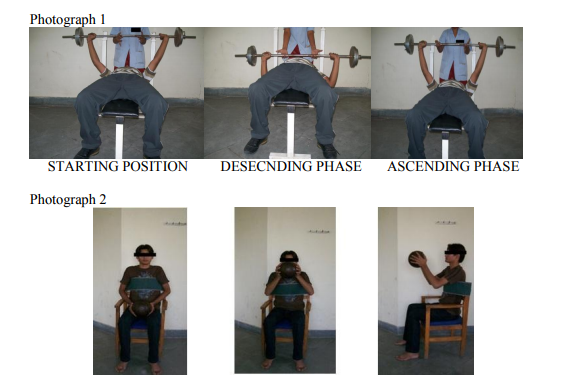
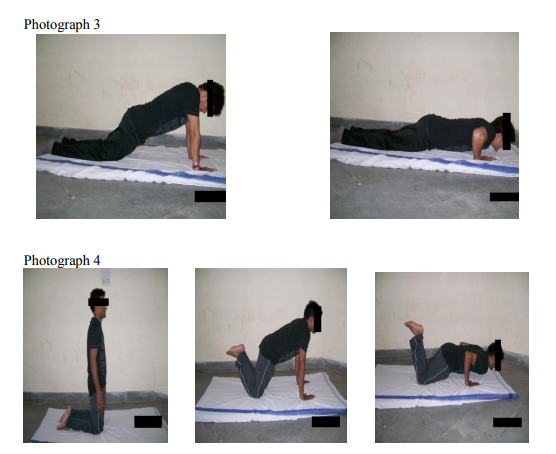
|






 This work is licensed under a Creative Commons Attribution-NonCommercial 4.0 International License
This work is licensed under a Creative Commons Attribution-NonCommercial 4.0 International License